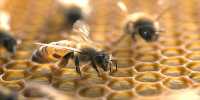Thanks to the long history of domestication, cannabis now comes in a collection of different varieties, each with its own unique configuration of cannabis and other compounds. According to a new study in the journal Science Advances, this process of selective breeding now began in the early Neolithic period in northwestern China, where wild cannabis was first published. Previous genetic studies have suggested that, despite the earliest archaeological evidence for the use of horn cords coming from China, the canyon originated in the Tibetan Plateau and is dated about 12,000 years ago, according to the authors of this study.
As such, it is widely accepted that the plant probably has its roots somewhere in Asia; yet pinpointing its birthplace has proven to be a challenge. It has basically come down to the very bottom that the cannabis wild expatriates are now extinct, and therefore cannot be studied directly. In its place are a number of specially cultivated strains of horn and medicinal cannabis, as well as a few other ancient varieties known as landresses.
Although these are not like the original cannabis plant trees, they have been replaced by natural selection over the centuries, rather than a less domesticated, intensive human-led breeding program than modern commercial edges. To get back to the history of the plant, the authors of the study analyzed the genomes of 110 different cannabis species, including 82 new genomes around the world and 28 universally available articles. Collectively, these encompass modern strains and landresses, as well as entire wild-growing feral varieties, which arise when the seeds of the breed “escape” and are allowed growing and reproducing naturally.
After evaluating the genetic relationships between all these plants, the researchers noticed that each modern horn and drug type of cannabis could be identified in “an ex-male gene pool” that appears to be in its original style of landres and germs. “Current Chinese landresses and nets represent the closest descendants of the ancestral gene pool from which horn and marijuana lands and farms were derived,” the study authors write.















